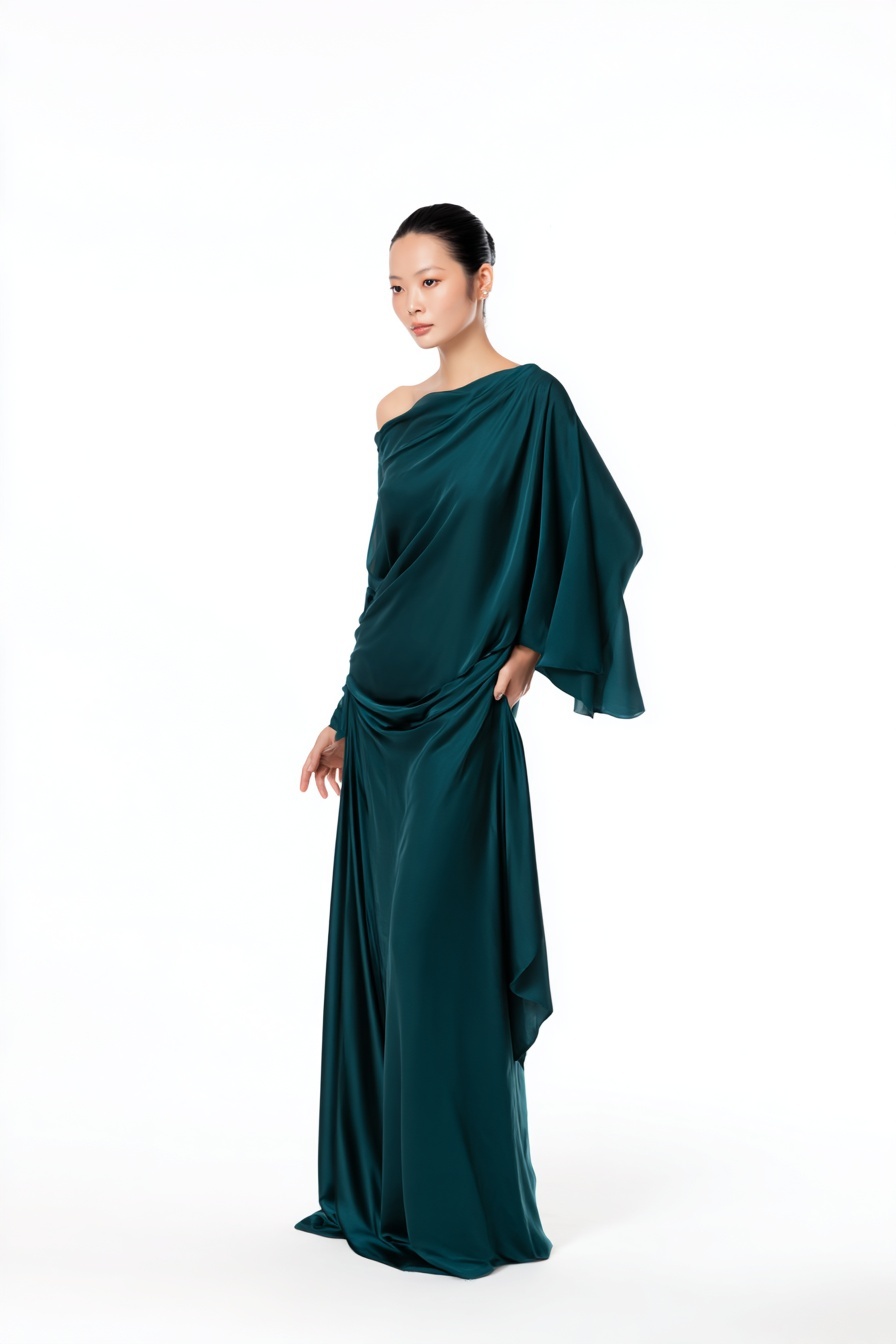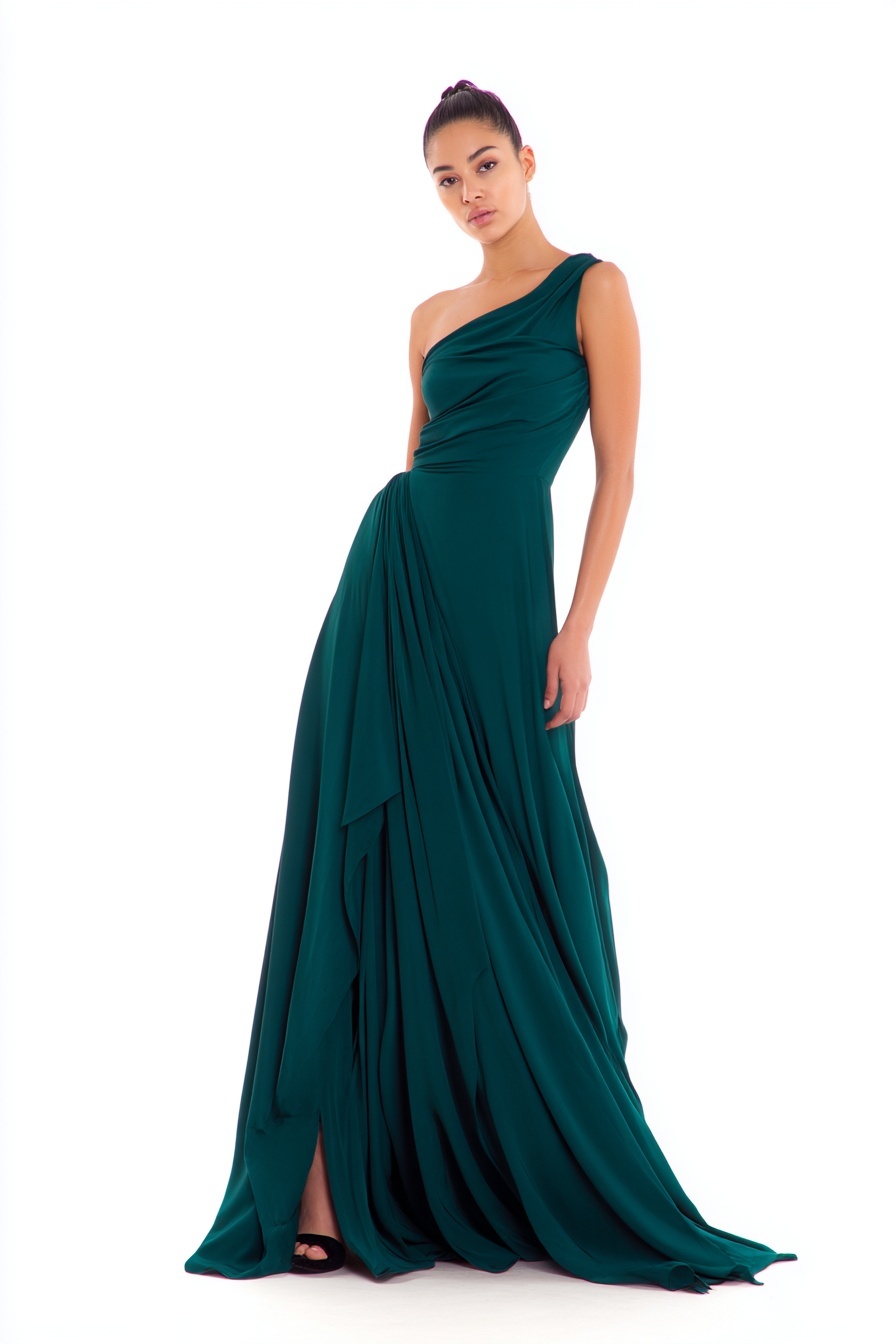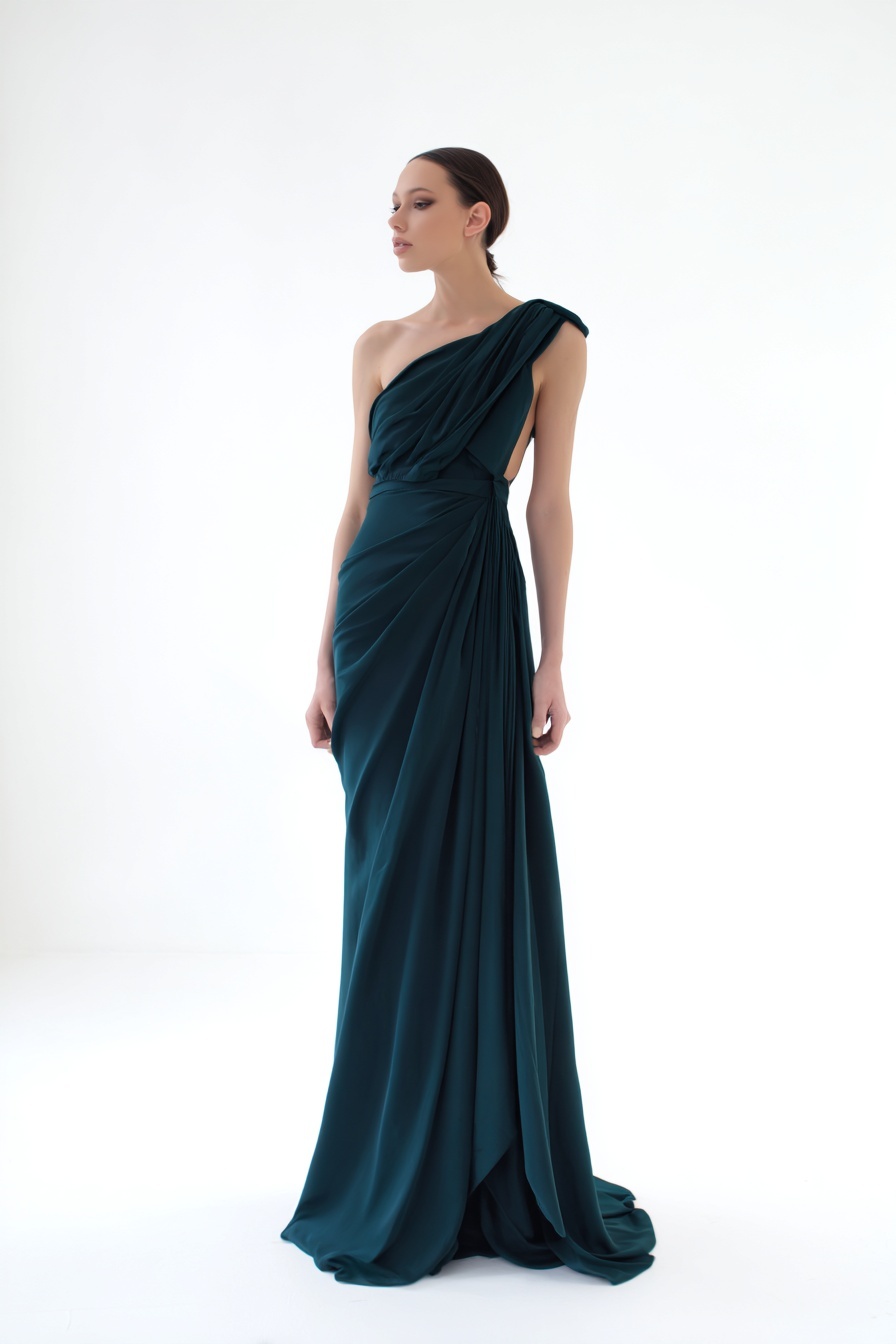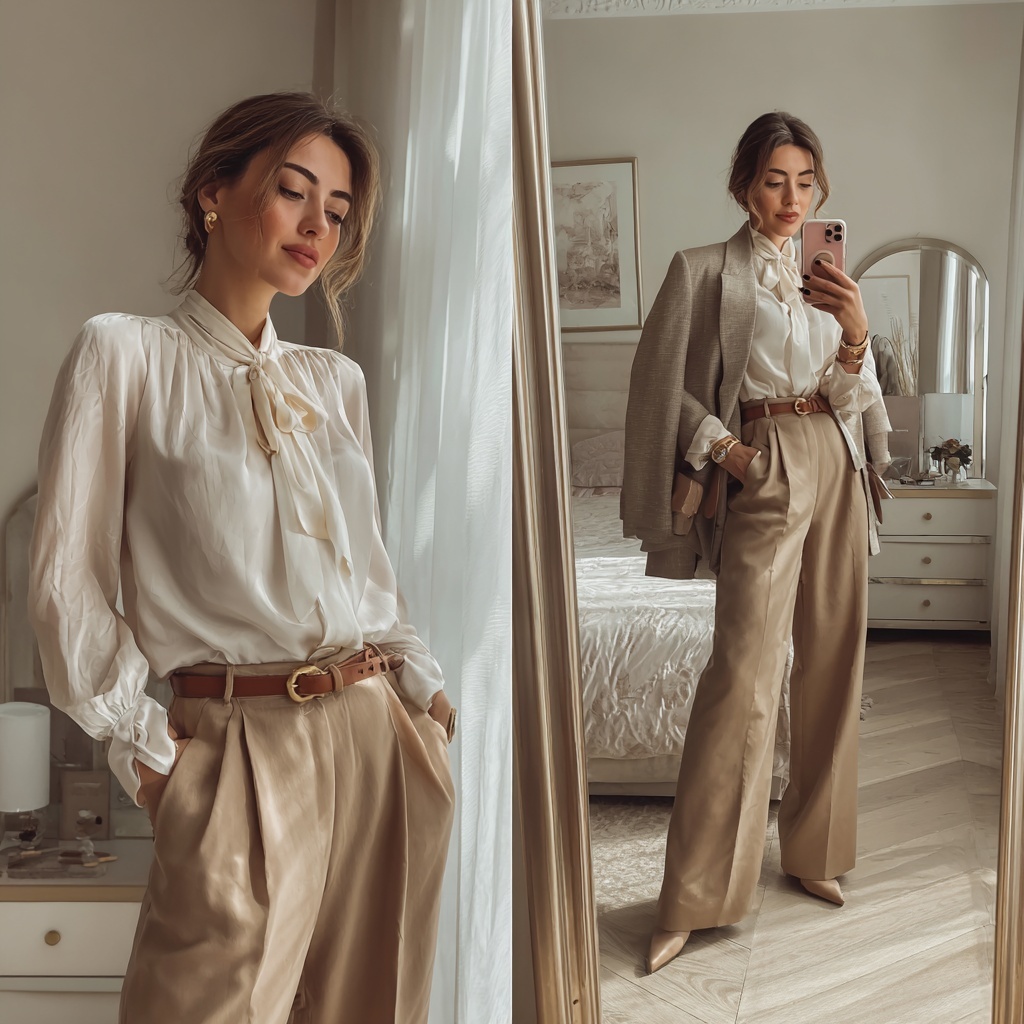AI Fashion Design: From Sketch to Runway with Banana Designer
Struggling with fashion mockups that take hours to render? Need to visualize clothing designs across multiple styles, colors, and fabrics? Traditional fashion design workflows require extensive manual work—sketching, rendering, and creating variations for every concept.
Banana Designer's AI outfit generator transforms your fashion design process. Generate garment visualizations instantly, test fabric textures in seconds, and create style variations without manual rendering. From initial sketch to runway-ready mockups, AI accelerates every step.
Why AI Fashion Design?
The Traditional Fashion Design Challenge
Fashion designers and clothing brands face time-consuming workflows:
- Manual Rendering: Each design variation requires hours of illustration work
- Limited Iterations: Testing multiple colors, patterns, and fabrics is prohibitively slow
- Client Presentations: Creating mockups for client approval takes days
- Fabric Visualization: Difficult to show how different materials will look
- Style Variations: Generating seasonal or trend-based variants is labor-intensive
The AI Fashion Design Solution
With Banana Designer's AI outfit generator:
✅ Instant Visualization: Generate garment mockups in seconds, not hours
✅ Unlimited Variations: Test hundreds of color, pattern, and fabric combinations
✅ Sketch-to-Design: Transform rough sketches into photorealistic fashion renders
✅ Fabric Textures: Visualize silk, denim, leather, cotton, and more automatically
✅ Style Exploration: Generate seasonal collections and trend-based variations
✅ Client-Ready Mockups: Create presentation-quality visuals instantly
AI Fashion Design Workflow
Method 1: Text-to-Fashion Design
Best for: Initial concept exploration, generating new design ideas
Start with a text description of your fashion concept:
Example Prompt:
A modern minimalist evening dress, flowing silk fabric, deep emerald green, asymmetric neckline, floor-length, elegant draping, studio photography, white background
What You Get:
- Photorealistic garment visualization
- Accurate fabric texture representation
- Professional presentation format
- Multiple angle options
Use Cases:
- Brainstorming new collections
- Exploring trend-based concepts
- Generating mood board visuals
- Initial client presentations




A modern minimalist evening dress, flowing silk fabric, deep emerald green, asymmetric neckline, floor-length, elegant draping, studio photography, white background
Best Model: Midjourney for creative and photorealistic garment rendering with accurate fabric textures
Method 2: Sketch-to-Design Rendering
Best for: Converting hand sketches into professional mockups
Upload your fashion sketch and let AI transform it into a photorealistic render:
Workflow:
- Upload Sketch: Hand-drawn or digital fashion illustration
- Add Details: Specify fabric type, colors, and styling
- Generate: AI creates photorealistic garment visualization
- Refine: Adjust details with precision editing
Example Transformation:
- Input: Black and white fashion sketch
- Output: Full-color, textured, photorealistic garment mockup, or any specified visual style.
Benefits:
- Preserve your original design intent
- Add professional polish to rough concepts
- Create client presentations from sketches
- Test designs before physical sampling

transform this sketch (image 1) into a water color hand drawn illustration of a piece of garment in two views, apply it with mostly light yellow and brown wool fabric. maintain all design details of the garment from the original sketch, just fill colour and texture to it. output the drawing using the water colour visual style from image 2.
Best Model: Flux AI for sketch-to-image transformation, then NanoBanana AI for refinement
Method 3: Reference-Based Fashion Design
Best for: Creating variations of existing designs, adapting trends
Use reference images to guide AI generation:
Workflow:
- Upload Reference: Existing garment photo or inspiration image
- Specify Changes: Modify color, pattern, fabric, or style elements
- Generate Variations: AI creates new designs based on reference
- Compare Options: Review multiple variations side-by-side
Example Applications:
- Adapting runway trends for your brand
- Creating seasonal color variations
- Testing pattern alternatives
- Generating size and fit variations
Advanced Technique: Style Transfer
- Apply the style of one garment to another design
- Blend elements from multiple reference images
- Create fusion designs combining different aesthetics

based on image 1, lets replace the sweater with the green sweater from image 2, and replace the pants with the dress from image 3.
Best Model: Seedream 1k for reference-based exploration and style transfer with multi-image input (we care less about accuracy)
Fabric Texture Visualization
Realistic Material Rendering
One of the most powerful features of AI fashion design is automatic fabric texture generation:
Common Fabric Types
| Fabric Type | Characteristics | Best For |
|---|---|---|
| Silk & Satin | Smooth, lustrous surface with elegant draping and light reflection | Evening wear, formal dresses |
| Denim & Canvas | Textured, sturdy appearance with visible weave patterns | Streetwear, casual jackets |
| Leather & Suede | Rich, tactile surface with natural grain patterns | Premium fashion, outerwear |
| Cotton & Linen | Natural, breathable look with soft, matte finish | Everyday wear, summer collections |
| Knits & Wool | Textured, cozy appearance with visible stitch patterns | Winter collections, sweaters |
Fabric Specification in Prompts
Example Prompts:
Oversized blazer, Italian wool fabric, herringbone pattern, charcoal gray, structured shoulders, professional styling
Summer dress, lightweight linen, natural beige, relaxed fit, breathable texture, beach resort aesthetic
Leather jacket, distressed black leather, vintage finish, asymmetric zipper, motorcycle style, urban fashion

let's replace the pants with a summer dress, lightweight linen, natural beige, relaxed fit, breathable texture, beach resort aesthetic. keep the t-shirt and the rest of the image unchanged.
Best Model: NanoBanana AI for realistic fabric texture rendering across all material types
Style Variations & Collections
Generating Fashion Collections
Create entire collections with consistent style but varied designs:
Seasonal Collection Workflow
1. Define Collection Theme:
- Season: Spring/Summer or Fall/Winter
- Aesthetic: Minimalist, Bohemian, Urban, Luxury
- Color Palette: Specific color scheme
- Target Market: Demographic and style preferences
2. Generate Core Pieces:
- Dresses
- Tops & Blouses
- Bottoms (Pants, Skirts)
- Outerwear
- Accessories
3. Create Variations:
- Multiple colorways for each design
- Different fabric options
- Size and fit variations
- Styling alternatives
Example Collection Prompt:
Spring/Summer collection, minimalist aesthetic, neutral earth tones (beige, cream, sage green), natural fabrics (linen, cotton), flowing silhouettes, sustainable fashion, studio photography

Based on the current lookbook, extracting styles and colours from it, and create a new image of one model wear some new pieces of garment - A hoodie in dark colour, and light color shorts, on beige background like the original image. remove the line on the edge of the image, keep out put with clean background.
Best Model: Nano Banana for cohesive collection generation with consistent aesthetic
Color & Pattern Variations
Rapid Color Testing:
Generate the same design in multiple colors instantly:
Base Design:
- Classic A-line dress, knee-length, short sleeves
Color Variations:
- Navy blue
- Burgundy
- Forest green
- Mustard yellow
- Black
Pattern Variations:
- Solid colors
- Floral prints
- Geometric patterns
- Stripes
- Abstract designs
Workflow:
- Generate base design
- Use precision editing to change colors
- Apply pattern overlays
- Compare variations side-by-side
- Select best options for production

change the dress's color to navy blue, and keep the rest unchanged
Best Model: Nano Banana for precise color and pattern variations with consistent garment structure
Advanced Fashion Design Techniques
Garment Detail Enhancement
Focus on Specific Elements:
- Necklines: V-neck, scoop, boat neck, halter, off-shoulder
- Sleeves: Bell sleeves, puff sleeves, cap sleeves, long sleeves
- Hemlines: Asymmetric, high-low, ruffled, straight
- Closures: Buttons, zippers, ties, wraps
- Embellishments: Embroidery, beading, lace, appliqué

turn the t-shirt sleeves into a roll-up style sleeve, and keep everything else unchanged.
Best Model: Nano Banana for local adjustments
Outfit Composition
Complete Look Generation:
Create full outfits with coordinated pieces:
Example Outfit:
- Top: Silk blouse, ivory, bow detail
- Bottom: High-waisted trousers, wide leg, camel
- Outerwear: Tailored blazer, neutral beige
- Accessories: Leather belt, gold hardware
Styling Considerations:
- Color coordination
- Proportion balance
- Occasion appropriateness
- Seasonal relevance




Let's create a fashion model wearing the following garments and accessories posing in front of a mirror in a bedroom. - Top: Silk blouse, ivory, bow detail - Bottom: High-waisted trousers, wide leg, camel - Outerwear: Tailored blazer, neutral beige - Accessories: Leather belt, gold hardware natural lighting, bright room, realistic mobile phone photo style.
Best Model: MidJourney for complete outfit composition and styling coordination
Model & Presentation Styling
Professional Presentation:
- Studio Photography: Clean white background, professional lighting
- Lifestyle Settings: On-location, contextual environments
- Flat Lay: Garment laid flat, detail visibility
- Hanger Display: Retail presentation style
- Model Poses: Dynamic, editorial, or catalog poses
Presentation Prompt Example:

let's use the garment pieces from the image, and make a new image that shows them in hanger display style with a retail presentation look. Make sure the garments (shirt/pants/blazer) are hang on three separate hanger. no model present.
Technical Flats
Design Documentation:
Generate technical flat sketches for production:
- Front and back views
- Construction details visible
- Measurement indicators
- Seam placement
- Hardware specifications
Technical Flat Prompt:
Technical flat sketch, women's blazer, front view, single-breasted, two-button closure, notched lapel, flap pockets, center back vent, clean line drawing

Based on the provided blazer garment design, let's create a technical flat sketch on this women's blazer, front view, pay attention to the design details of it, three buttons, proportion, with a clean line drawing
Best Model: Nano Banana for clean technical flat sketches and line drawings
Real-World Fashion Workflows
Complete Design Pipeline: Concept to Client Presentation
Multi-Model Approach:
- Explore concepts (MidJourney/Flux) → 2. Render fabrics (NanoBanana) → 3. Refine details (Precision Editing) → 4. Generate color variations (Batch)
Time: 2-3 hours vs. 2-3 days traditional
Runway Trend Adaptation
Upload runway photos + brand references → Blend with Flux/Seedream → Refine with NanoBanana → Generate technical flats
Time: 4-6 hours vs. 1 week traditional
Collection Development
Create mood board → Generate coordinated pieces → Test combinations with multi-image view → Batch generate seasonal colorways
Time: 2-3 days vs. 2-3 weeks traditional
Choosing the Right Model in Banana Designer
Banana Designer gives you access to multiple AI models—each optimized for different fashion tasks:
| Task | Best Model | Why | Banana Designer Advantage |
|---|---|---|---|
| Creative Exploration | MidJourney, Flux | Artistic, diverse concepts | Switch models instantly to compare styles |
| Photorealistic Renders | NanoBanana | Accurate fabric textures, details | Use Precision Editing for refinements |
| Reference-Based Design | Seedream, Flux | Multi-image input, style blending | Upload multiple references at once |
| Technical Flats | NanoBanana | Clean lines, geometry reasoning | Generate and edit in same workspace |
| Color Variations | NanoBanana | Consistent structure across colors | Batch generate all colorways |
Banana Designer's Multi-Model Advantage: Start with any model, switch to another for refinement—all in one workspace with full history tracking.
Learn more about model selection →
Integration with Other Workflows
Extend your AI fashion design workflow:
- E-commerce Workflow → Generate product images and lifestyle shots for online stores
- Marketing Creatives → Create social media content and ad campaigns from your designs
Frequently Asked Questions
Q: How is Banana Designer different from other AI image generators?
A: Banana Designer is built for iterative design workflows with Precision Editing (edit specific areas without full regeneration), multi-model access in one interface, and built-in history tracking. Most AI tools force you to regenerate entire images for small changes.
Q: Can I switch between models mid-project?
A: Yes! Start with MidJourney for exploration, switch to NanoBanana for photorealistic rendering, use Precision Editing for adjustments—all in one workspace. Your entire history is preserved regardless of which model you use.
Q: Do I need to know prompt engineering?
A: No. Banana Designer includes a Visual Prompt Builder (Prompt Composer) where you select options from dropdowns. Advanced users can still write custom prompts if preferred.
Q: How does Precision Editing work for fashion?
A: Use visual masking to select specific garment areas (neckline, sleeves, hem). Edit only those parts while preserving the rest of the design. Perfect for testing variations without starting over.
Q: Can I use multiple reference images?
A: Yes! Upload multiple inspiration images simultaneously. Banana Designer's multi-image input lets you blend elements from different sources—combine runway trends with your brand aesthetic.
Q: Are designs commercially usable?
A: Yes, designs generated with Banana Designer can be used commercially. For production, work with pattern makers to translate visual mockups into technical specifications.
Next Steps
Explore Related Features
- Precision Editing: Refine fashion design details
- Multi-Model Pipeline: Combine models for best fashion results
- Prompt Composer: Generate fashion prompts easily
- Model Selection Guide: Choose the right AI model for fashion tasks
Learn More Design Workflows
- Interior Design Styles: Apply AI to interior design projects
- Advanced Interior Techniques: Professional design transformations